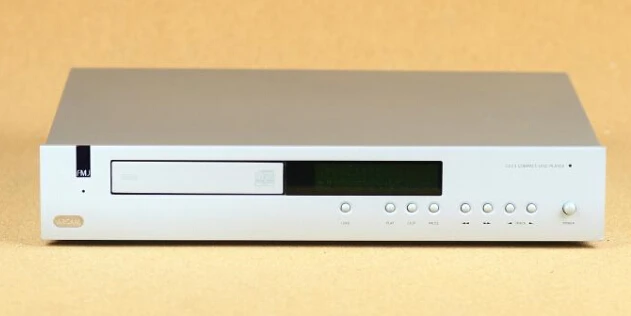The decade of the 1990s would be remembered as the decade in which Compact Disc finally matured. Whereas CD players in the 1980s were often unconventional –even odd –by 1990, the breed was quickly becoming honed into what we now call “normal.”
The Sony CDP-X33ES was the epitome of this. Today, it may appear to be quite ordinary –perhaps a little antiquated stylistically –and nothing to write home about. But when it was originally introduced in the first year of the twentieth century, it seemed to encapsulate the sophistication of the decade.
The Sony CXD2552Q 1-bit DAC was the star of the show. The corporation was entirely devoted to Bitstream, and here was a testament to it, with its embryonic Super Audio Compact Disc format in development.
To be clear, this new DAC design was intended to be less noisy than Sony and its competitors’ 16-bit, 4-times oversampling chips – and, more crucially, it was expected to be a lot cheaper to mass produce.
The audiophile credentials of Bitstream sold it, but the cost issue wasn’t then widely highlighted. The X33ES was the cheapest of the company’s premium-priced ES line, selling for a very competitive $900 at that time.
The goal was to provide a taste of the high-end ES goods at a lower cost. It gave almost nothing away in terms of features to any of its more expensive siblings. In many ways, it was even better equipped than the pricier CDP-X77ES. It boasted a direct access track keypad and a ‘music calendar’ on its large, dot-matrix fluorescent display, as well as a Sony KSS-270A mechanism that provided lightning fast track access speeds.
The value of the latter cannot be overstated: just a few years ago, a first-generation Philips machine could take up to ten seconds to crawl from one end of the disc to the other, but this could do it in under a second. It gave the X33ES a very modern and refined air to it.
The machine’s finish wasn’t as as luxurious as its more expensive bigger brethren, but it did share a spacious metal box (430 x 125 x 375mm) with a lovely brushed aluminium and black coated pressed steel chassis and case. It wasn’t exactly light, weighing 10kg, and the solid base and dual power transformers accounted for the majority of the weight (one for digital, one for analogue).
Fixed and variable outputs, as well as a digital optical output (the motorized output level potentiometer, programmable via the RM-D590 remote control, was the height of cool back then).
With a frequency response of 2Hz20kHz 0.3dB, Total Harmonic Distortion of 0.002 (EIAJ), and a signal-to-noise ratio of 113dB, the CDP-X33ES performed admirably by today’s standards (EIAJ). It used 18 watts of power.
Sonically, it was unmistakably Sony (at the time): Exceedingly precise and detailed, with a sharply etched tone and seemingly limitless energy. It appeared very futuristic at the time, with far more focus than your usual Philips-based CD spinner at a similar price, but it wasn’t the most beguiling or appealing listen.
The Sony lacks delicacy and elegance, with a vibrant top end that really comes out to say hello, despite being incredibly powerful and dynamic. However, because the impact is tempered by a strong bass, the effect is impressive in hi-fi terms, even if it isn’t the nicest and most naturally melodic machine available.
The CDP-X33ES players were sold in large quantities, so they’re not hard to come by — though the laser is no longer widely available, so keep that in mind when negotiating a price. Try your best to hear the machine in action before making a purchase.






